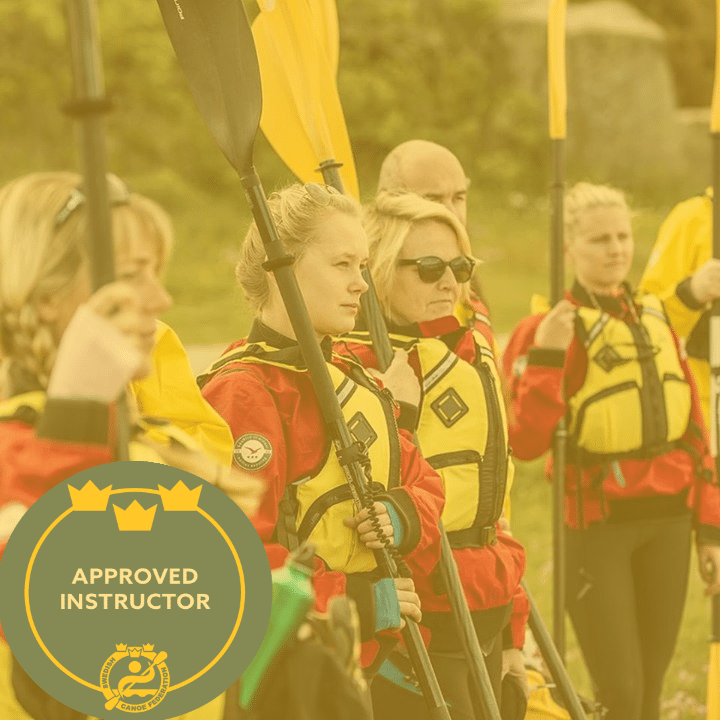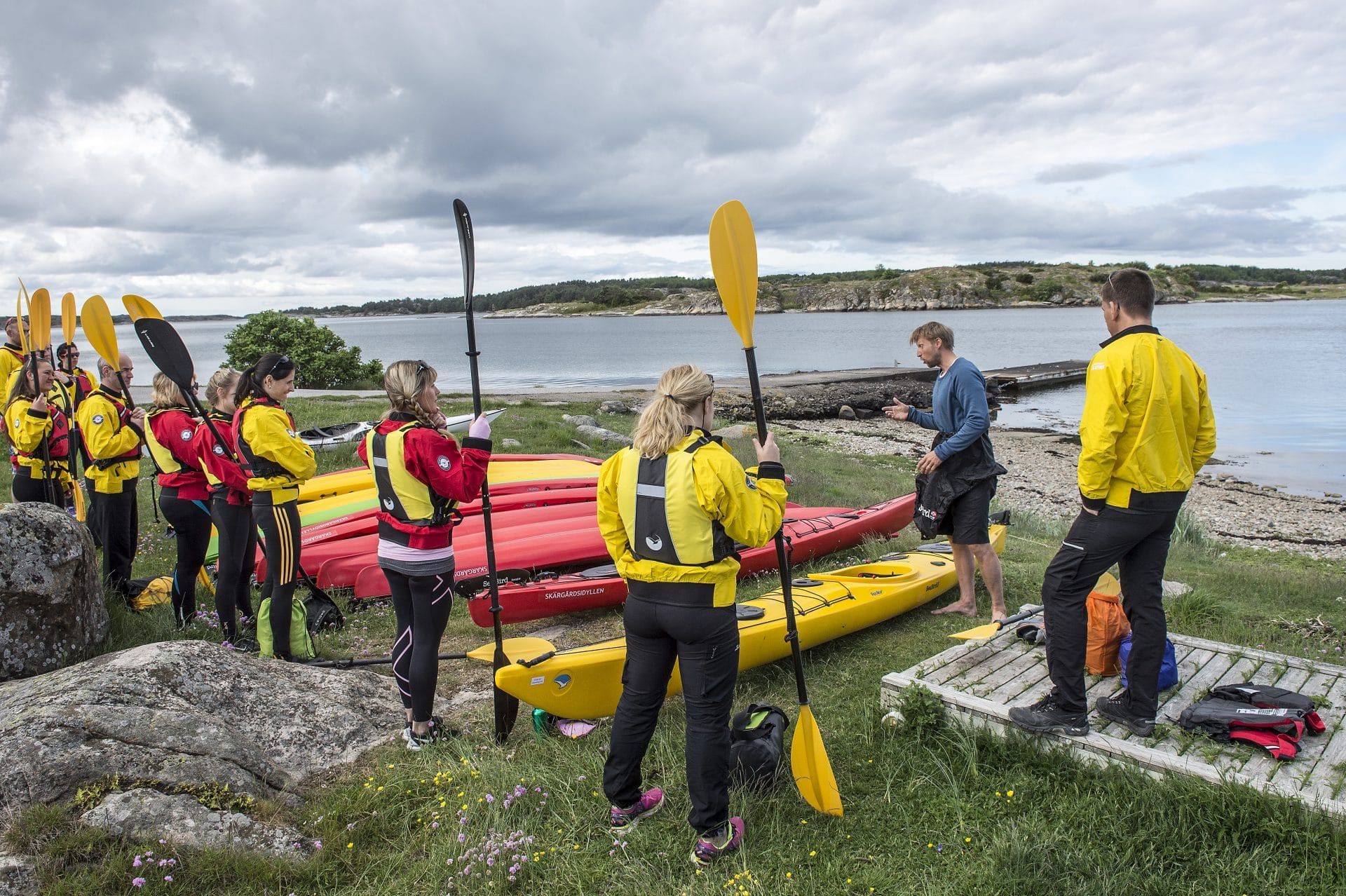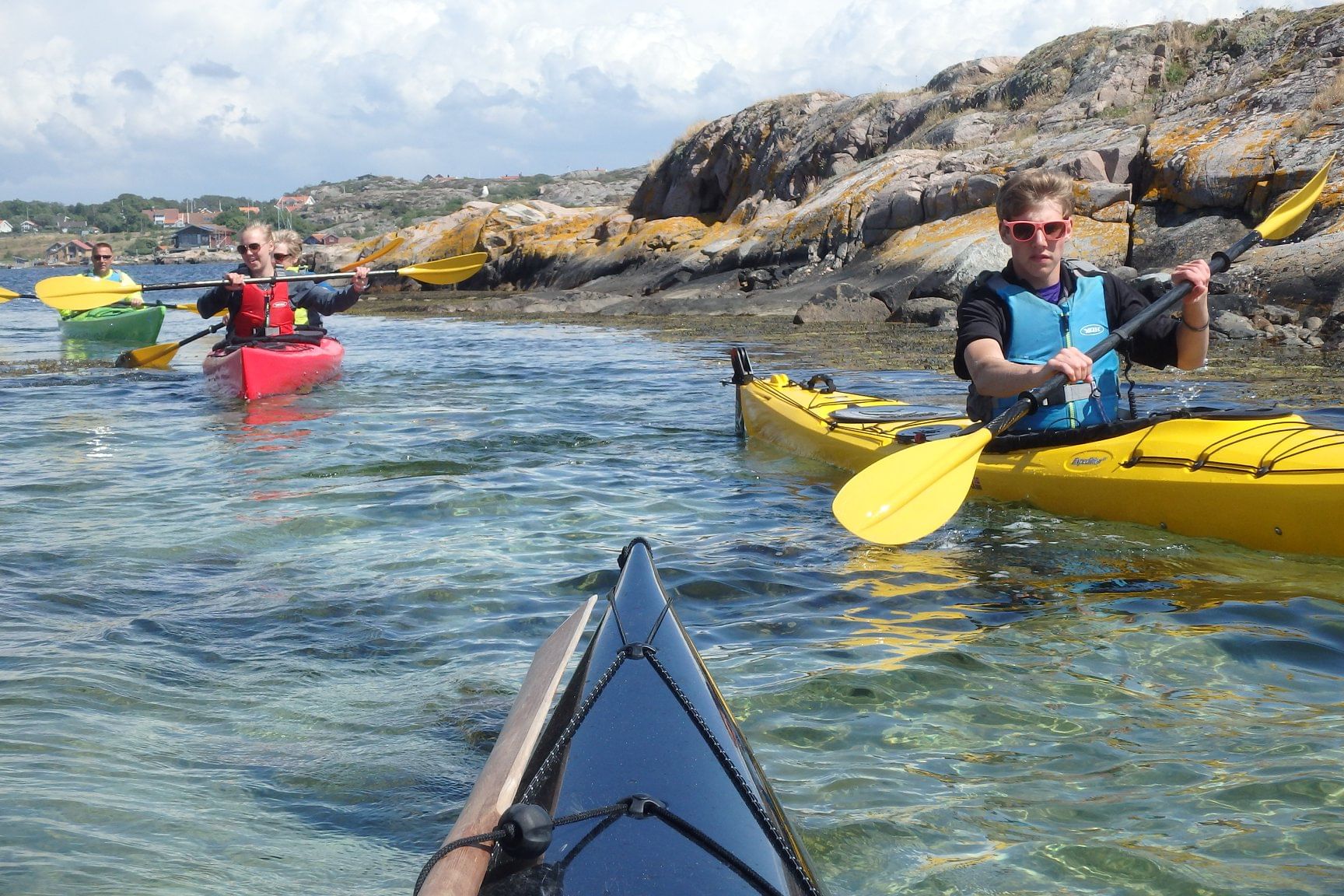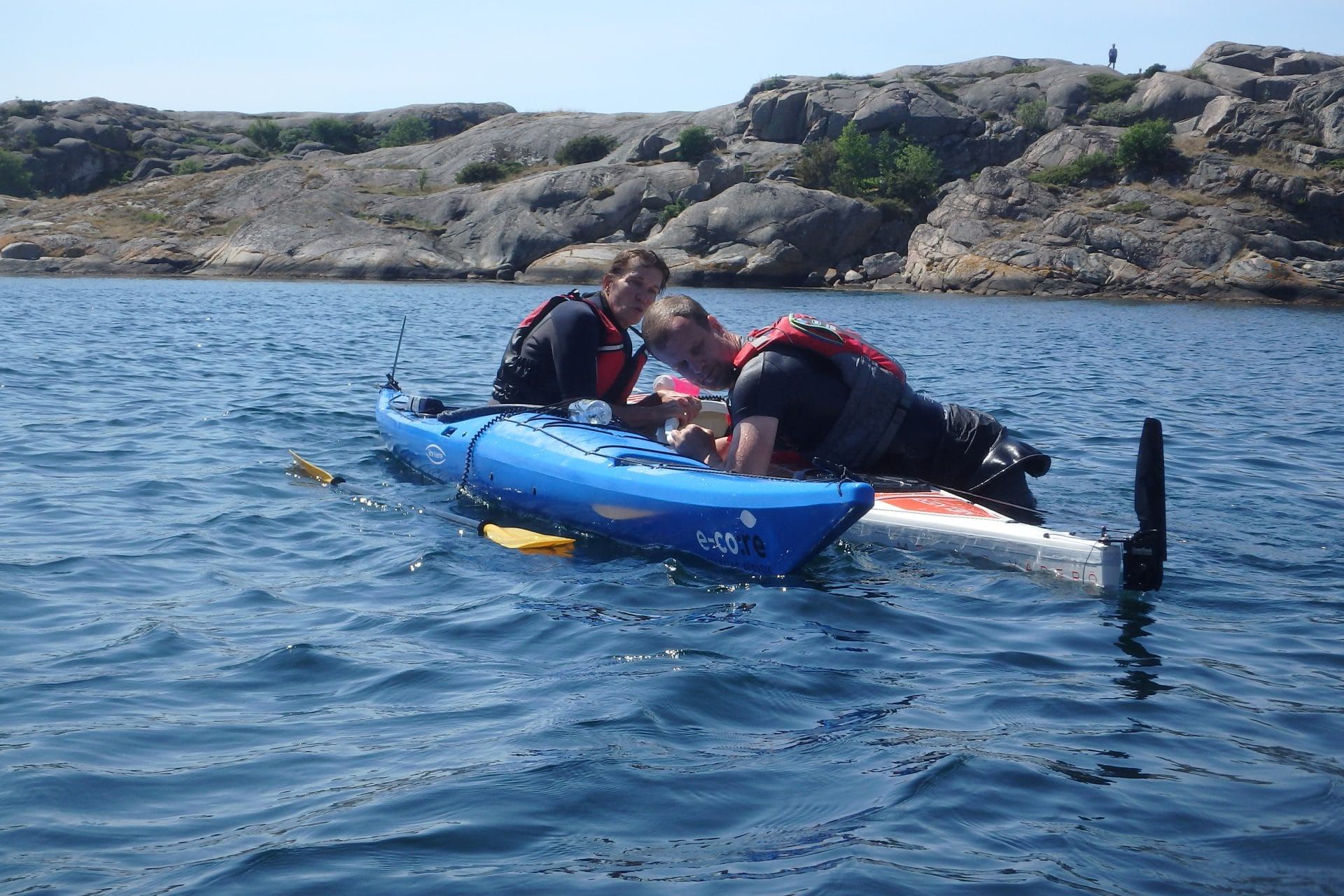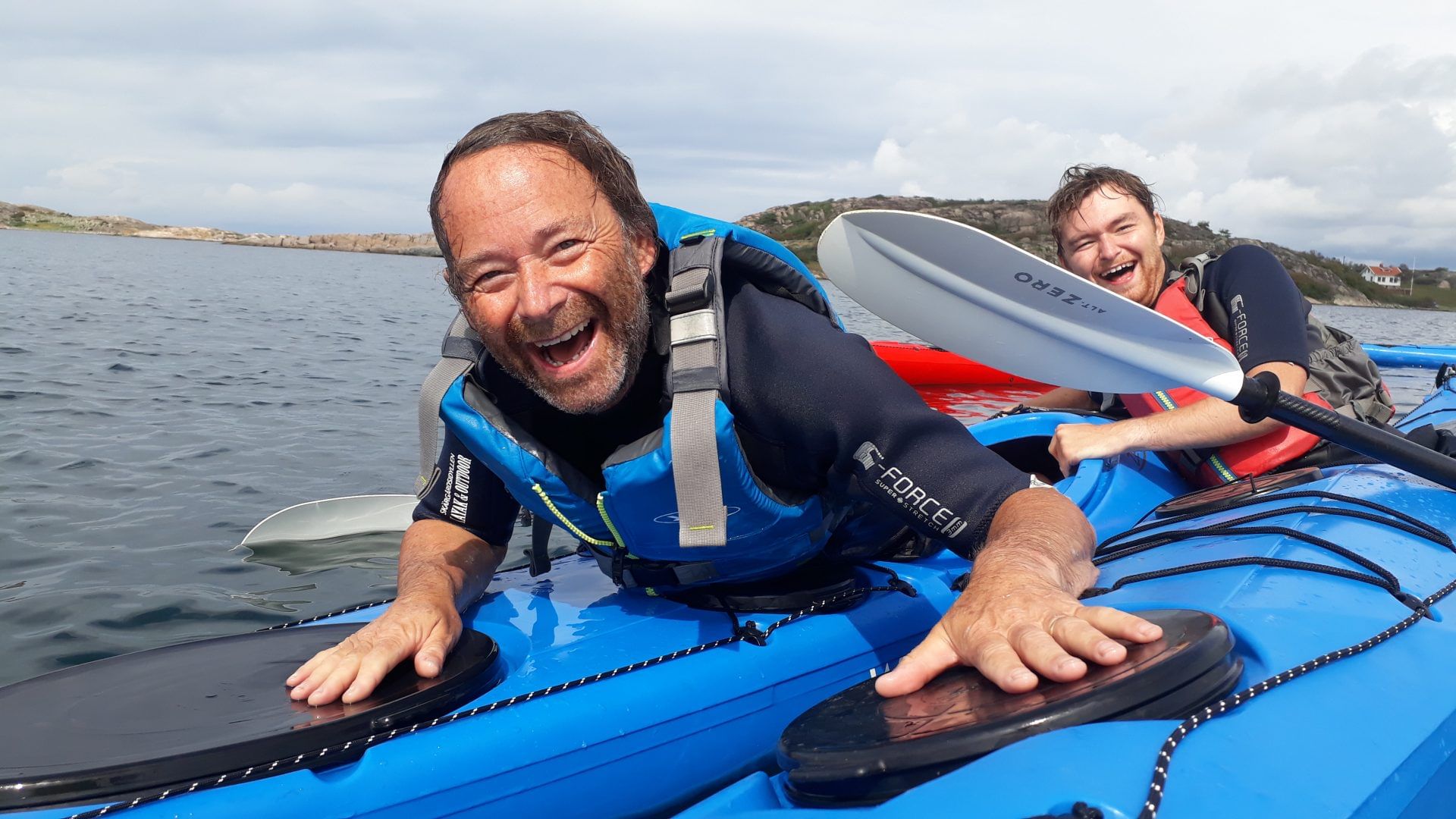Euro Paddel Pass, EPP level 1
Euro Paddel Pass, EPP level 1
3 hours
Moderate
The canoe and kayak federations in Europe has set a standard certification system with regards to kayak skills, safety and environmental concerns. Level 1 focus on basic paddling technique in calm waters.
The canoe and kayak federations in Europe has set a standard certification system with regards to kayak skills, safety and environmental concerns. The goal is to offer a mutual, clear system for improved skills and knowledge for all levels and areas within the kayak and canoe federation. The requirements are pretty much the same in all countries som local adjustments has been made with respect to nature and local differenses.
It is conducted outdoor on flat water and is considered an encouragement award and a basic assessment of ability at the end of an introductory course. The test itself should encourage fun, basic boat handling skills, safe practice and a regard for equipment and the natural environment.
TECHNICAL STANDARDS
Lifting, carrying and launching
- The candidate must demonstrate good safe lifting and carrying principles using legs rather than the back; assistance is recommended.
- The paddle must remain within reach or can be used to assist in embarking.
- Correct approach to waterway relative to gradient, current, and type of bank or shore.
- Control must be maintained while entering the water.
Forward paddling over a 50m course
- Candidates must show evidence that they are able to control the kayak/canoe in a straight line over a distance of 50 metres.
- Some directional instability is likely to occur but this should not include complete loss of forward movement or a continuous careering from side to side.
Stopping
- Stopping should be demonstrated in both directions.
- Opposite motion should be in evidence within four strokes.
Sweep Stroke - Rotate 360 degrees on the spot
- Spinning should be demonstrated in a clockwise and anti-clockwise rotation using the appropriate combination of forward sweeps and reverse sweeps.
- Some body rotation to be in evidence
Reverse paddling
- The kayak/canoe should travel a distance of 25 metres.
- Turning the trunk and looking over one or both shoulders must be in evidence
Paddle a figure-of-8 course
- The candidate should paddle a prescribed figure-of-8 course using a combination of forward strokes and sweeps to demonstrate a basic level of steering control.
Return to bank and disembark
- Correct approach to the bank, relative to wind, current, and type of bank or shore.
- Control must be maintained while exiting.
PROGRESSION
Show sufficient beginnings of:
Moving sideways
- Some body rotation towards the paddling side should be in evidence.
- Blade should be well immersed, paddle shaft probably not upright at this stage.
- Recovery of the blade through the air or sliced in the water is acceptable.
- Clear evidence of sideways movement should be in evidence - some bow or stern swing is acceptable.
Ruddering
- With forward movement of the canoe/kayak, the paddle should be inserted to one side of the boat.
- Blade should be almost covered, front arm relaxed over stomach, shaft parallel to side.
- The kayak/canoe should be kept running in a straight line with the paddle remaining on the one side.
Preventing a capsize
- The kayak/canoe should be edged sufficiently to be nearly off balance.
- Low recovery strokes should be demonstrated on both sides.
SAFETY STANDARDS
Capsize, swim ashore and empty
- The candidate should remain calm and quickly regain and maintain contact with the kayak/canoe.
- The paddle should be retained or collected by swimming with the kayak/canoe to the paddle and empty the boat on the bank/shore.
- Help can be asked for, so long as the candidate remains in charge of emptying.
Water confidence
The candidate should show confidence about being immersed in the water while wearing a buoyancy aid.
Equipment standard
Basic kayak, SUP-board or canoe and paddle.
Personal Protective Equipment
The candidate must wear a buoyancy aid and appropriate gear for situation and weather, which may include but is not limited to - helmet and footwear.
What's included?
Exclusions
Please note
What to bring
We recommend that you dress according to the weather, sun/wind/rain protection and please bring an extra set of clothes in case you get wet.

